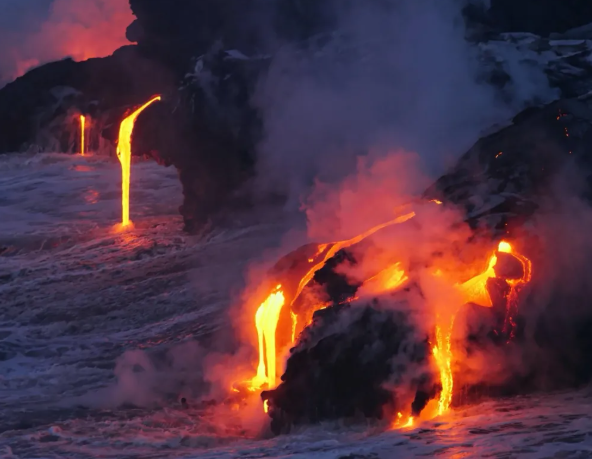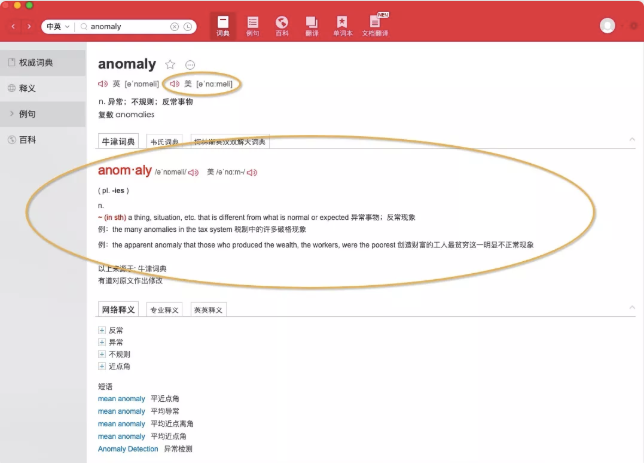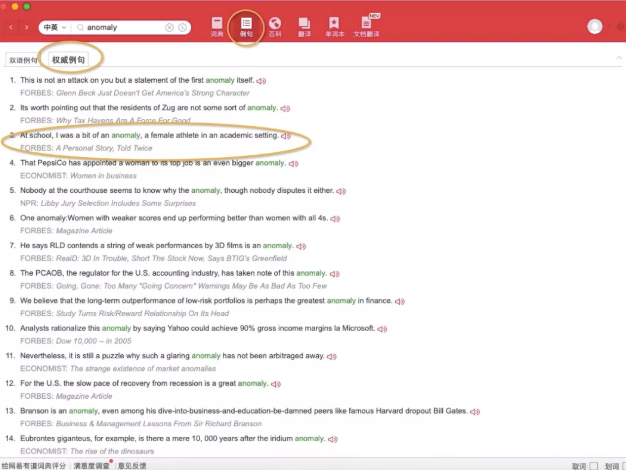别再做无用功了!托福听力你需要这么练
新航道托福培训:托福精听的目标,除了弄明白这一篇文章之外,更重要的是通过有效训练,来训练语音的敏感度,提升我们的听力能力,做到来者无畏。
要达成这个目标,我们需要通过“词汇-句子-篇章结构”的逻辑层层突破,接下来我们以TPO48-L2这篇地质学文章为例,来具体说道说道,如何有效精听一篇文章。
这是一篇介绍夏威夷岛火山形成原因的文章,文中出现了不少专业名词,让很多考生一脸蒙圈。

一、 精 准掌握文中生词
很多同学喜欢用词汇书或APP背单词,这个方法适用于快速扩充词汇量,以及广泛熟悉学科词汇。
如果要精 准掌握词汇,最好的方法是在精听文章时,利用文章的语境,对词汇进行听训。以下是我从T48L2总结出的一些词汇:
crust
n. 地壳
tectonic
adj. 构造的;地壳构造上的
plate
n. [地质]板块
volcano
n. 火山
boundary
n. 边界,分界线
anomaly
n. 异常;不规则;反常事物
magma
n. 岩浆
lava
n. 火山岩浆;火山所喷出的熔岩
plume
n. [地质]地幔柱
hypothesis
n. 假设
crack
n. 裂缝 v. 使形成裂缝
我们遇到生词时可以借助各种词典APP,这里以有道词典为例,我们来查一下anomaly这个单词。
搜索栏打出单词,首先是要点小喇叭进行词汇跟读,然后注意看中英文解释。

接下来是一个非常重要的步骤,点开“例句”,选择“权威例句”,从中挑选句子学习,并点击小喇叭进行跟读。

在这里给大家敲黑板划重点啦,背单词要背形(拼写)、音(发音),更需要学习句子。
之所以建议同学们选择“权威例句”,是因为这一栏的例句均来自《福布斯》《经济学人》等原版杂志,而非来源于“三无产品”,通过这个途径我们学习到的也是最权威的用法。
二、选择性跟读
跟读是一种非常高效的练习方式,因为在跟读的过程中,语音的输入和输出同时进行,帮助我们提升语音敏感度,也训练了我们的短时记忆能力。
我们可以挑选音频中的一段,逐句进行跟读,同时模仿原文的语音语调,注意连读、吞音、重音、弱读的位置进行还原。
这里建议有能力的同学脱离文本,将“跟读”训练成“复述”,来提高练习的效率。
有很多同学问过,要不要做Shadowing(影子跟读练习)。
Shadowing可以提升信息抓取和整合能力,也能训练短期记忆力,但是对于大多数备考托福的学生们来说,这种训练方法并不合适。
我们知道,影子跟读训练要求训练者以最小的时间差跟读音频,直到能够跟音频完全同步,同时逐步理解全部内容。
托福文章有一定的学科性和专业性,很多同学对音频的初步理解都会存在问题,这时进行影子跟读,可能会导致同学们对听到的发音进行无脑重复,实际上并没有理解音频内容,这样就失去了训练意义。
三、适当听写
听写是在跟读的基础上结合速记的一种训练,听写不仅能够提升信息抓取、整合能力,也为做笔记打下了坚实的基础。
下面是老师的一位亲学生做的听写:
Ok. We know the Earth surface, the cr, made of t p, and the huge slip of rocky crust are slowly sliding over or under or pass each other, and we said most of the world's volcanoes occur boundaries of these t p when you have hot molten rock rising up through gaps between the plates.
学生问题分析:
Ok. We know the Earth surface(漏听), the cr(生词), made of (漏听)t p(生词), and the(误听) huge slip(词汇问题) of rocky crust are slowly sliding over or under or pass(误听) each other, and we said most of(漏听) the world's volcanoes occur boundaries(漏听) of these t p(生词) when(误听) you have hot molten rock rising(误听) up through gaps between the plates.
听力原文:
Ok. We know the Earth's surface, the crust, is made up of tectonic plates, and these huge slabs of rocky crust are slowly sliding over or under or past each other, and we said that most of the world's volcanoes occur at the boundaries of these tectonic plates where you have hot molten rock squeezing up through gaps between the plates.
可以看出红色部分的错误主要是因为高频学科词汇的掌握问题,黄色部分主要是由于辨音导致的漏听和误听。
当然,漏听和误听通常是伴随着逻辑问题和语法问题的,同学们分析一下自己的听写,你们有什么样的问题呢?
四、分析文章逻辑
细节听懂不等同于文章的理解,我们还需要注意结构的掌握,最 高效的方法就是通过主旨句、逻辑词等关键信息来判断行文结构。
我们还是以T48L2为例,从刚才的听写片段可知,这篇文章开头讲到大部分的火山出现在板块交界之处(the boundaries of these tectonic plates),
接下来文章讲了一个异常现象(anomaly),就是夏威夷岛(the Hawaiian Islands)。
The Hawaiian Islands, for example, are thousands of kilometers away from any plate boundary, and yet you have vast amounts of magma, molten rock or lava, flowing up through the earth's crust, which means, of course, that volcanic activity there can't be explained simply by plate tectonics.
随着异常现象,文章提出疑问,夏威夷岛火山形成的原因是什么?
So, how do we explain these volcanic anomalies, these exceptions to the general rule?
然后按照顺序,分别提出了两大假设(plume hypothesis和 crack hypothesis)
According to this hypothesis, plumes, uh, basically columns of extremely hot magma. These plumes well up from deep inside the planet's interior, maybe even as deep as its core, and rise all the way up to melt through the Earth's crust.
But one well-regarded theory is the crack hypothesis, which assumes that hot spots are created when a piece of the crust gets stretched thinner and thinner and the resulting stress causes small cracks to open up at weak spots in the crust, and it's through these cracks that magma pushes up to form volcanoes.
这样,我们就得到了这一篇文章的结构:普遍现象→提出特例→ 分析原因 → 两大假设。
当然,托福成绩的提升还需要配合考点定位、做题技巧等多方面的训练。















